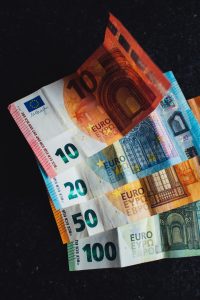Forex trading is an exciting and dynamic investment opportunity that offers traders the ability to profit from changes in the value of different currencies. One of the most important factors that can affect the value of a currency is monetary policy. In this article, we will explore how to trade forex based on monetary policy and what you need to know to be successful in this arena.
What is Monetary Policy?
Monetary policy refers to the actions of a central bank or other monetary authority to manage a country’s money supply and interest rates. The goal of monetary policy is to stabilize the economy by controlling inflation, promoting growth, and maintaining a stable currency. Central banks use a variety of tools to implement monetary policy, including setting interest rates, controlling the money supply, and regulating the banking sector.
Why Does Monetary Policy Affect Forex Trading?
Monetary policy can have a significant impact on the value of a country’s currency. When a central bank raises interest rates or tightens monetary policy, it makes it more expensive for investors to borrow money, which can lead to a stronger currency. Conversely, when a central bank lowers interest rates or loosens monetary policy, it makes it cheaper for investors to borrow money, which can lead to a weaker currency.
In addition to interest rates, other factors that can affect a country’s monetary policy include inflation, economic growth, and political stability. Traders who are able to anticipate changes in monetary policy can profit from the resulting changes in currency values.
How to Trade Forex Based on Monetary Policy
To trade forex based on monetary policy, traders need to be familiar with the economic indicators that are used to predict changes in interest rates and other aspects of monetary policy. These indicators include:
1. Gross Domestic Product (GDP): GDP measures the total value of goods and services produced in a country. A strong GDP can indicate growth in the economy, which may lead to higher interest rates and a stronger currency.
2. Inflation: Inflation measures the rate at which prices are rising in a country. High inflation can lead to lower interest rates and a weaker currency, while low inflation can lead to higher interest rates and a stronger currency.
3. Unemployment: Unemployment measures the percentage of the workforce that is currently unemployed. High unemployment can lead to lower interest rates and a weaker currency, while low unemployment can lead to higher interest rates and a stronger currency.
4. Consumer Price Index (CPI): The CPI measures the overall cost of goods and services in a country. A high CPI can indicate inflation, which may lead to lower interest rates and a weaker currency.
5. Central Bank Statements: Traders should also pay attention to the statements and comments made by central bank officials. These statements can provide insight into the bank’s thinking and may indicate future changes in monetary policy.
Once traders have a good understanding of these indicators, they can use them to predict changes in monetary policy and adjust their forex positions accordingly. For example, if a trader believes that a central bank is about to raise interest rates, they may want to buy that country’s currency in anticipation of a stronger currency.
Conclusion
Trading forex based on monetary policy requires a solid understanding of economic indicators and the ability to interpret central bank statements. Traders who are able to accurately predict changes in monetary policy can profit from the resulting changes in currency values. While it can be challenging to trade forex based on monetary policy, it can also be highly rewarding for those who are willing to put in the time and effort to learn the ins and outs of this complex market.





